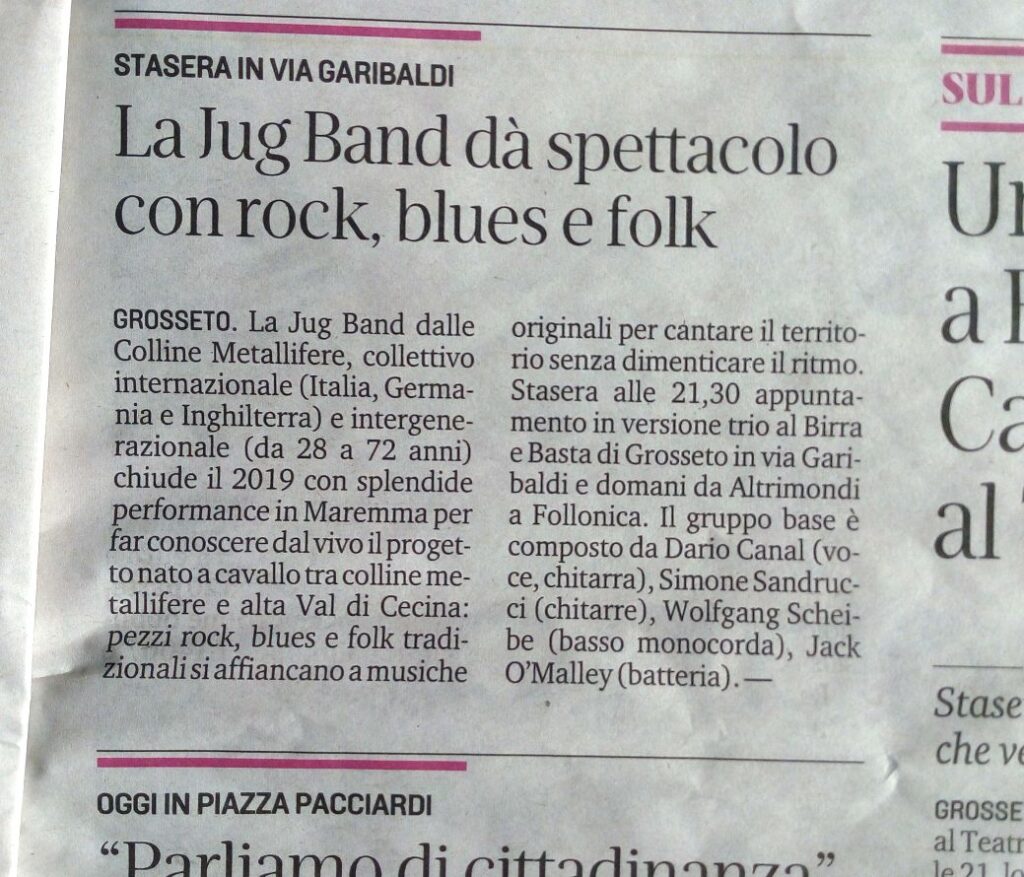
The Jug Band performs with Rock, Blues, and Folk (Tirreno Grosseto edition, Dec. 28, 2019)


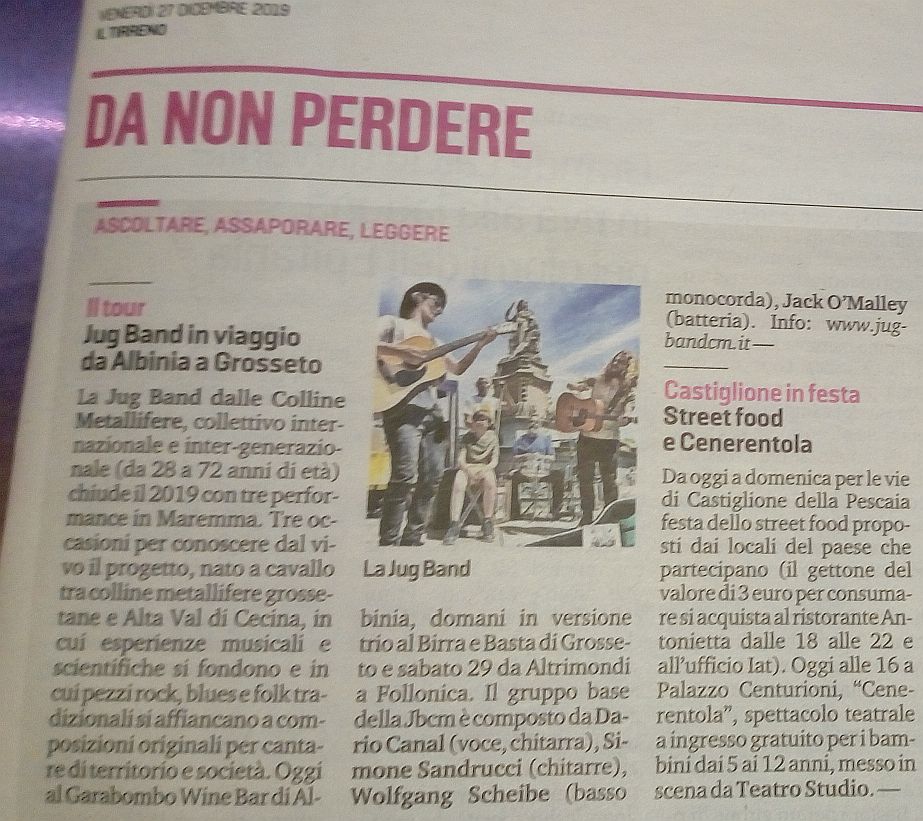
circa 1990
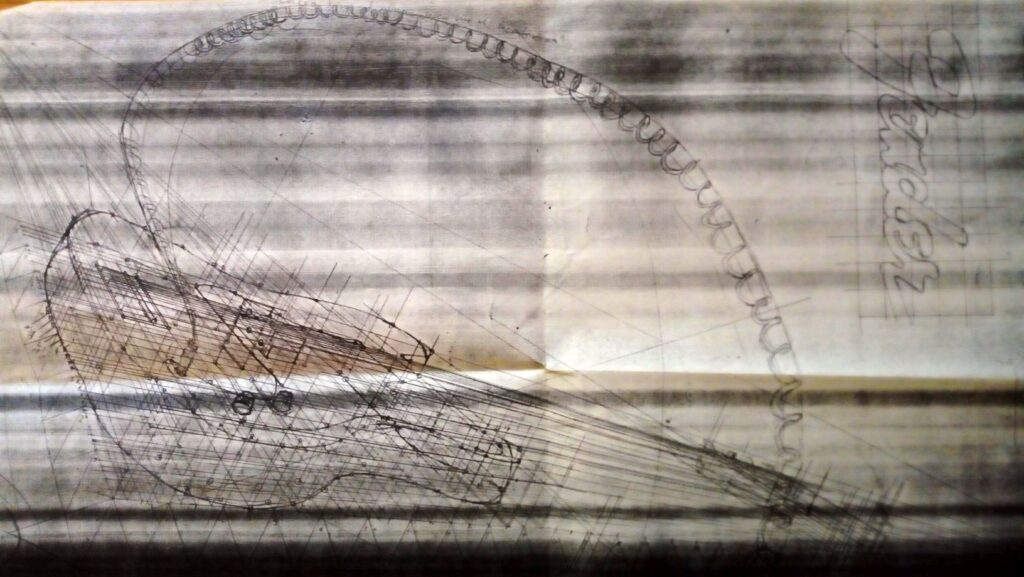
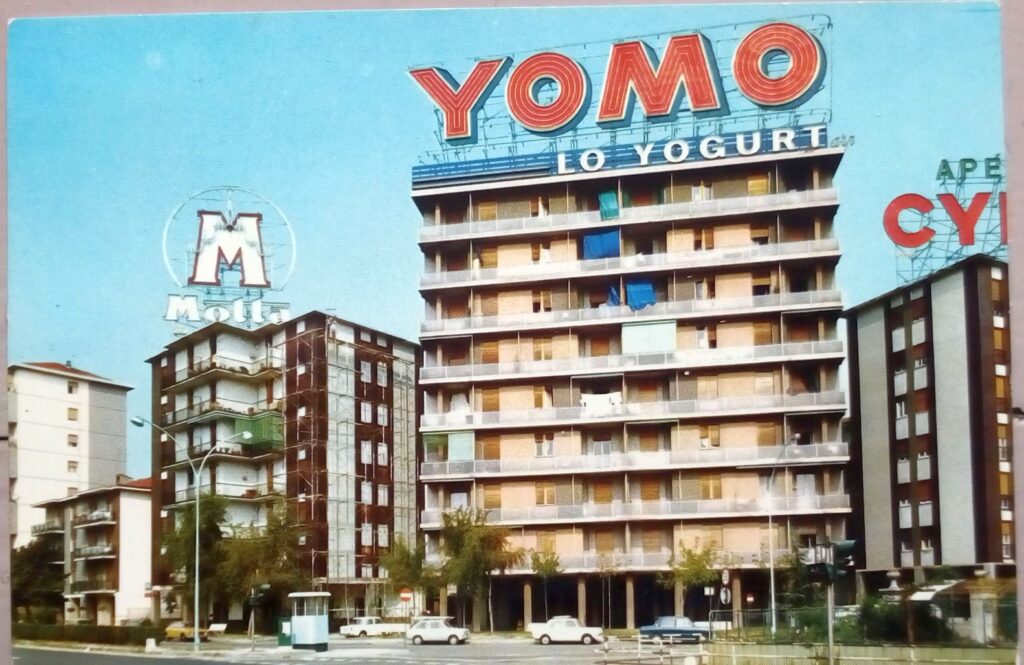
The multi-talented Wolfgang Scheibe helps you approach the Christmas holidays with a selection of some fifty of his hand-made prints, which you may visit at Altrimondi in Follonica, Tuscany, from Dec. 6.
For the opening of the exhibition there will also be wine tasting with products from local biodynamic farms, as well as the presence of some members of the Metalliferous Hills Jug Band Colline Metallifere (starting from Wolfgang, with his one-string bass player hat).
For more information: tattistampa@tiscali.it
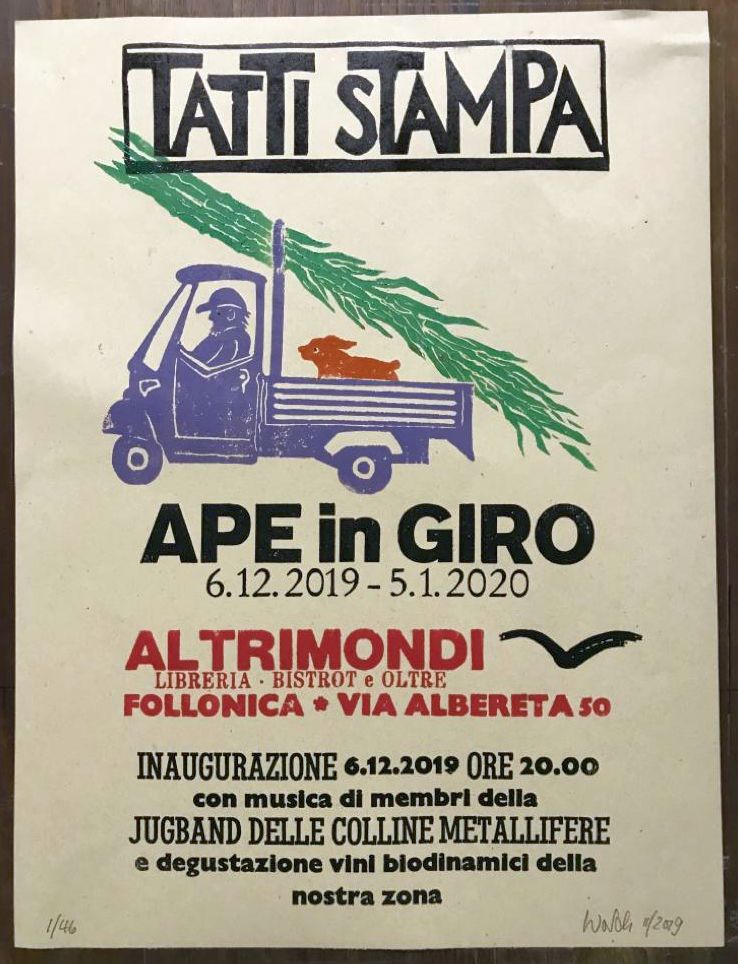
SP 157 (by Piloni/Torniella) – SP124 (for the Belagaio Castle), Southern Tuscany, Nov. 17, 2019
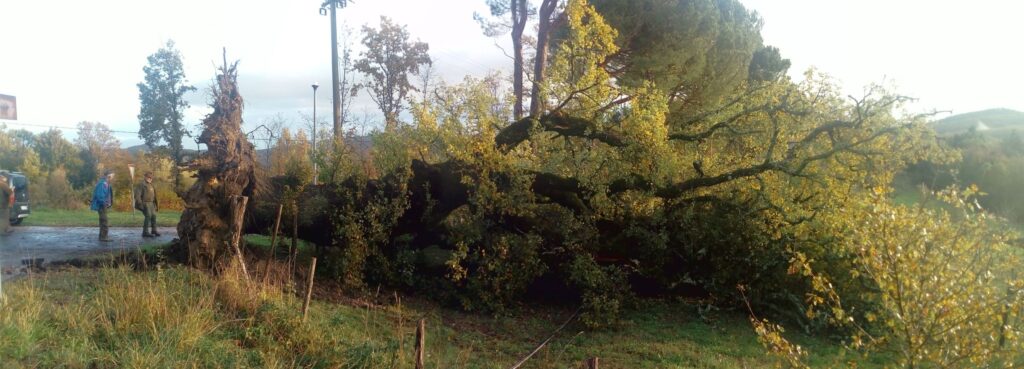
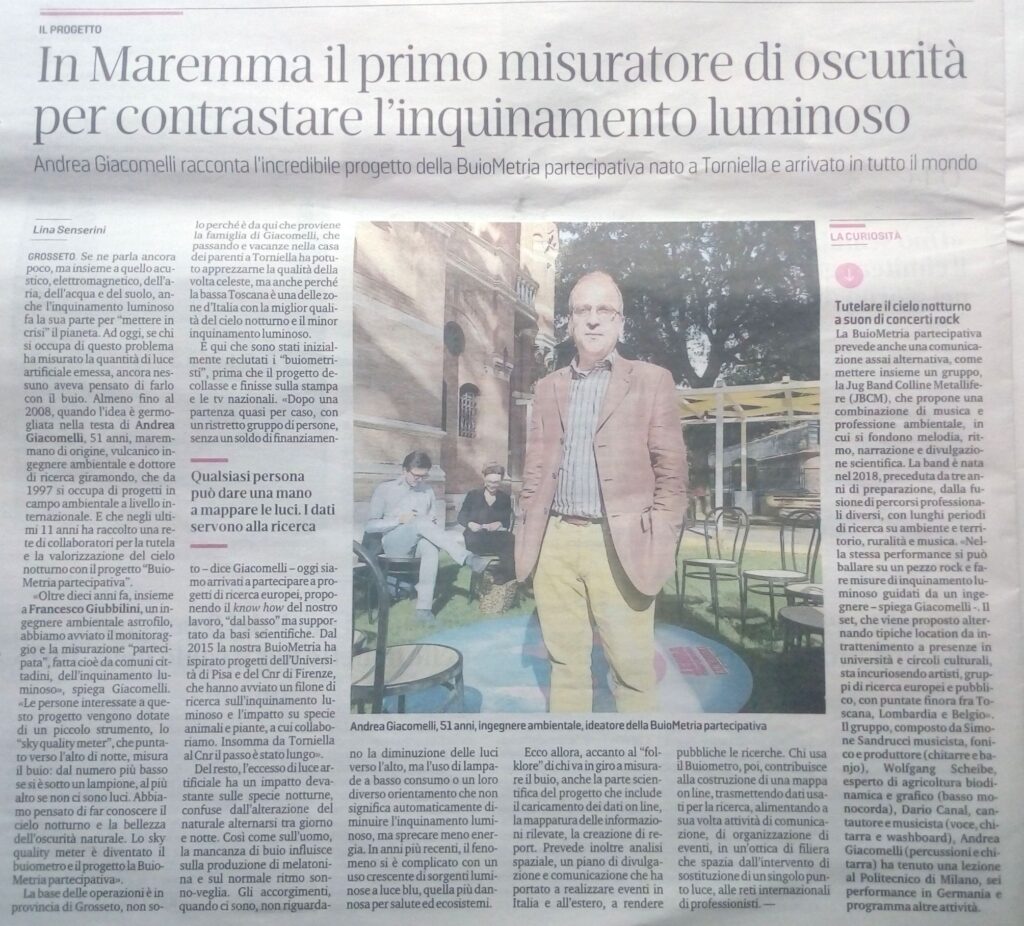

You may check out this post to see what took place before this picture
